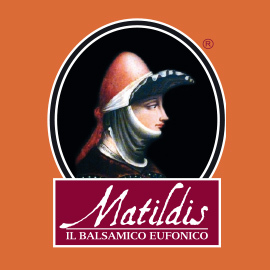The origins of balsamic vinegar go far back in time, the procedure descends directly from the antique world.
Wine, vinegar and cooked must arrived in the North of Italy in the seventh century BC with the Etruscans, who had learned viticulture from the Greeks and who, spending about 400 years in Emilia, were able to select suitable vine varieties.
Cooked must (known as “sapa”) was the only sweetener available for poor families who cooked the must at home (often from stolen grapes) to knead and sweeten their bread at Christmas.
This widespread practice is described by Virgil in the first book of the Georgics:
One foggy November evening (in Mantua) “his wife the while, her tedious labour soothing with a song, speeds the shrill comb along the warp or else with Vulcan’s aid boils the sweet must-juice down, and skims with leaves the quivering cauldron’s wave”, “aut dulci musti Volcano decoquit umore/et foliis undam despumat aheni” Virgil, Georgics I, 295-296.
While the custom dates back to antiquity, real balsamic vinegar began with the spread of ageing over decades and centuries, obtained by yearly decanting on a rising scale into a series of barrels with different capacities.
The first record of its existence is to be found in the poem “Vita Mathildis” by the monk Donizone, biographer of the Canossa family, who tells us that in the year 1046 Enrico III, on arriving in Piacenza while on the road to Rome to be crowned emperor, asked Boniface, Marquis of Tuscany and father of the Countess Matilda, for a special vinegar that was produced in the fortress. Flattered by the request of Enrico III, Boniface sent it to him in a specially made silver barrel, which was much appreciated.
An authoritative quotation about vinegar on the literary plane comes from Ludovico Ariosto, in satire III, which he sent to his cousin Annibale Malaguzzi in 1518.
“I prefer to stay at home and cook a turnip
And having cooked it put it on a stick
And clean it and sprinkle it with vinegar and cooked must,
Rather than eat dove, partridge or wild boar
At another man’s table, and then sleep well
Under a poor blanket as though it were of silk or gold.”
In 1598 the correspondence between the governor of Rubiera, Contugo and the Chamber of the Duke of Este in Modena, stressing the necessity to reorganise the “acette”, or vinegars, stored in the Fortress, because neglecting such a heritage “is a great damage”, confirms the historic nobility of this vinegar which was only declared balsamic in 1747, according to some documents in the archives of the Duchy of Modena.
In 1792, Ercole III d’Este, Duke of Modena, sent it to Frankfurt as a sign of participation and a gift to the Archduke Francis II of Habsburg on the occasion of his being nominated Holy Roman Emperor.
In September 1839, Count Giorgio Gallesio from Savona wrote for the first time with admiration about the production techniques he had observed in the Vinegar Cellar of the Counts Salimbeni at Nonantola, in the province of Modena.
In 1862, at the Modena Exhibition, Carandini presented a vinegar that was 360 years old; this date takes the production of Modena vinegar back to 1502, to the time when Modena was a province of the Duchy of Ferrara; this Modena tradition therefore precedes the birth of the Duchy of Este in Modena by almost one hundred years.
In that same year, and precisely on 2 March, the lawyer Francesco Aggazzotti wrote and immediately afterwards published a letter to the lawyer Pio Fabriani, in which he laid down the rules for the production, cooking and in particular the use of acetified cooked must for traditional Modena balsamic vinegar.



